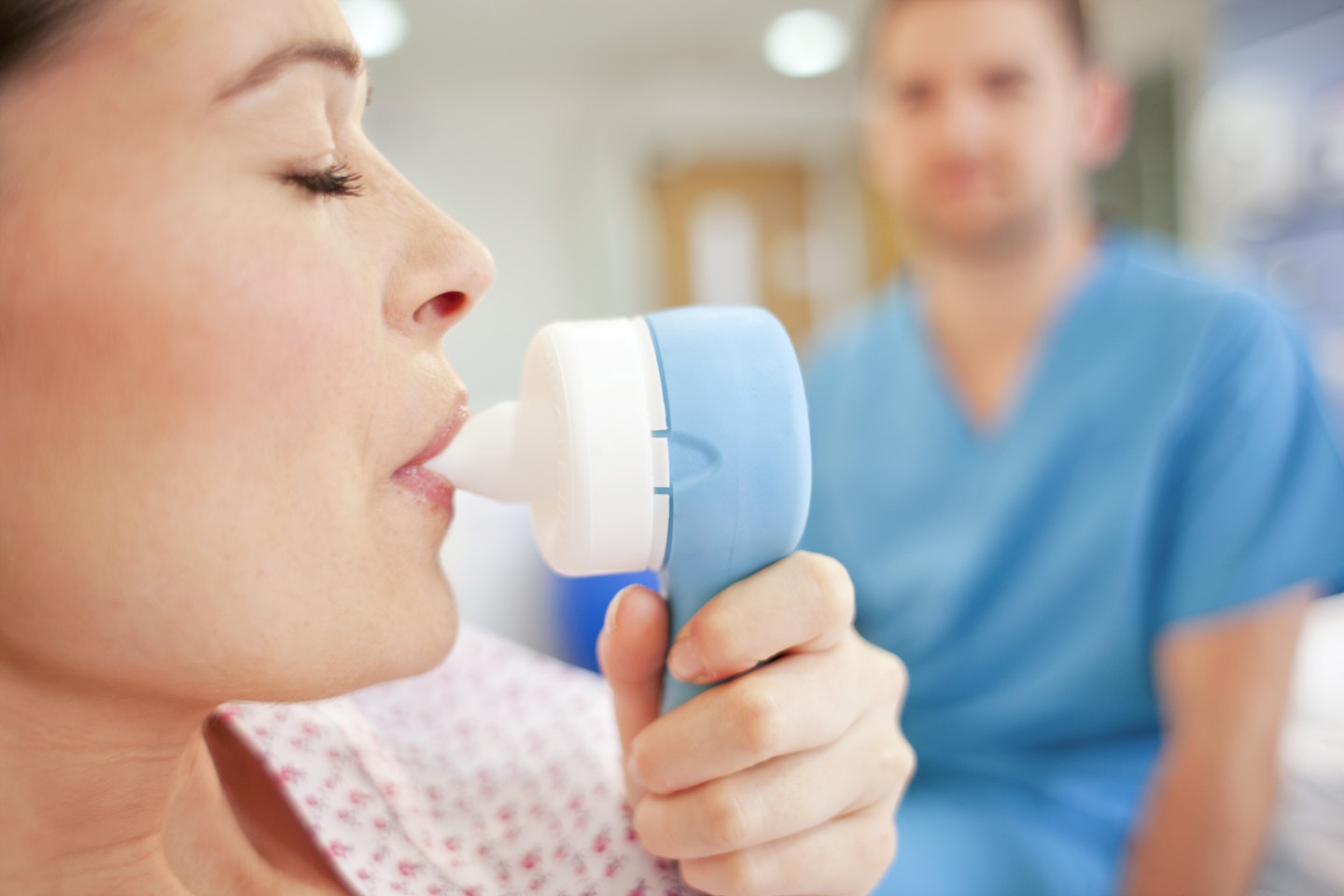If you're looking for a more natural form of pain relief during labour, as opposed to something strong such as an epidural, you might want to consider gas and air or, as it's medically referred to, Entonox_._ It's an odourless, colourless gas that you inhale through a mouthpiece, which helps to take the edge off of your labour pain.
It’s also referred to as ‘laughing gas’ and is the most popular pain relief during labour with around 80 per cent of women choosing to use it. You can also take other pain relief alongside gas and air, such as pethidine or diamorphine.
How does gas and air work as pain relief during labour?
Entonox is made up of half oxygen and half nitrous oxide that will provide you with good pain relief during labour. It can make you feel quite light headed and even a little giggly (hence the name 'laughing gas'). It has a calming effect that helps you cope with contractions.
You inhale it through a mouthpiece and a filter which you will be in control of throughout your labour. It has a two-way valve that releases the gas and air ready for you to breathe in and then takes away the carbon dioxide that you breathe out.
Gas and air will be an option in most places you choose to give birth, whether that's at a birth centre or even at home.
How do I use gas and air?

Gas and air is easy to use. Simply put the mouthpiece between your lips or teeth and breathe deeply and evenly until you feel slightly light-headed then take it away.
You may find you need to practice so you can get the timing right, it can take a few breaths for the gas to kick in and a couple of minutes to ensure you get the maximum effect.
Biting down on the mouthpiece can also help you cope with the pain of contractions. After a few seconds, you’ll feel normal again.
You may get a chance to practise using the mouthpiece or mask if you go to an antenatal class.
When can I use gas and air?
You can use gas and air whenever you want once you are in active labour. As soon as you feel a contraction beginning, start breathing the gas and air. This will allow it to be effective when the pain is at its worst.
You should avoid breathing in gas for long periods, or constantly between contradictions, as this may make you feel dizzy. As there is a limit to how long you can safely use Entonox, you won't want to start using it until you really need it.
As an alternative, consider starting with a birthing ball, taking a warm bath or trying a hypnobirthing technique. Then as your labour progresses you can switch to gas and air.
What are the benefits of gas and air?
• It is a fast-acting way of reducing your labour pains.
• It's completely safe for your baby. The extra oxygen you breathe in can actually be good for you and your baby.
• You are completely in control of when you use it and it's easy to use.
• It won’t stay in your system. Once you stop breathing it in, it’s cleared by your lungs and any side effects you might feel will stop.
• If you want to feel your birth, and know when to push, gas and air will take the edge of your pains rather than blocking it out completely.
• You can use it at the same time as other pain relief or if you're in a birthing pool.
• Your baby won't need extra monitoring like they would with an epidural.
What are the cons of gas and air?
• It is quite mild in comparison with stronger labour pain relief, like an epidural.
• It can cause you to feel drowsy and sick.
• Your mouth may feel dry if you use it for long periods of time.
• It takes around 30 seconds of breathing for the gas and air to get into your system. It can therefore take a while to get the timing right so that it's effective at the peak of your contractions.
